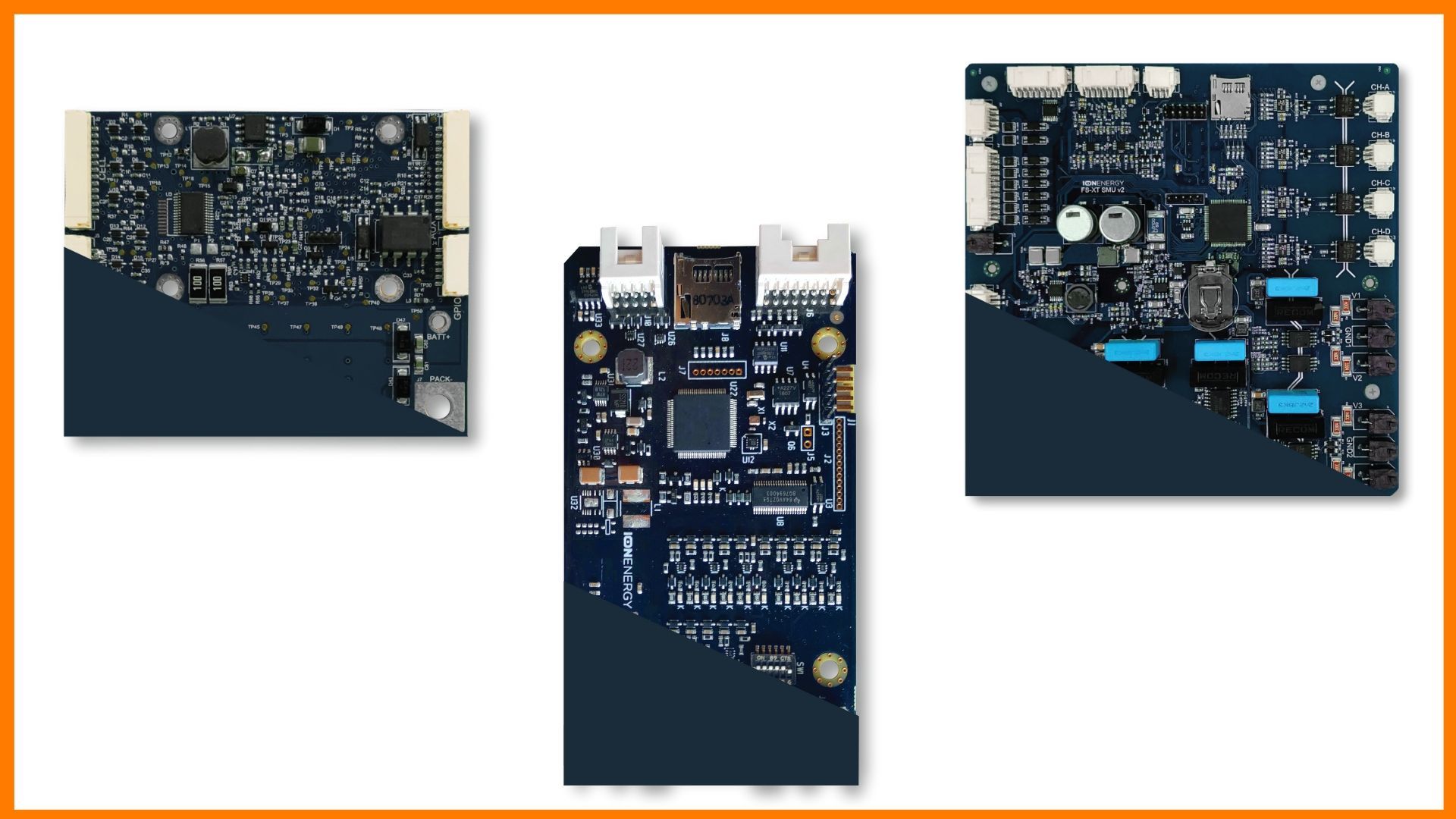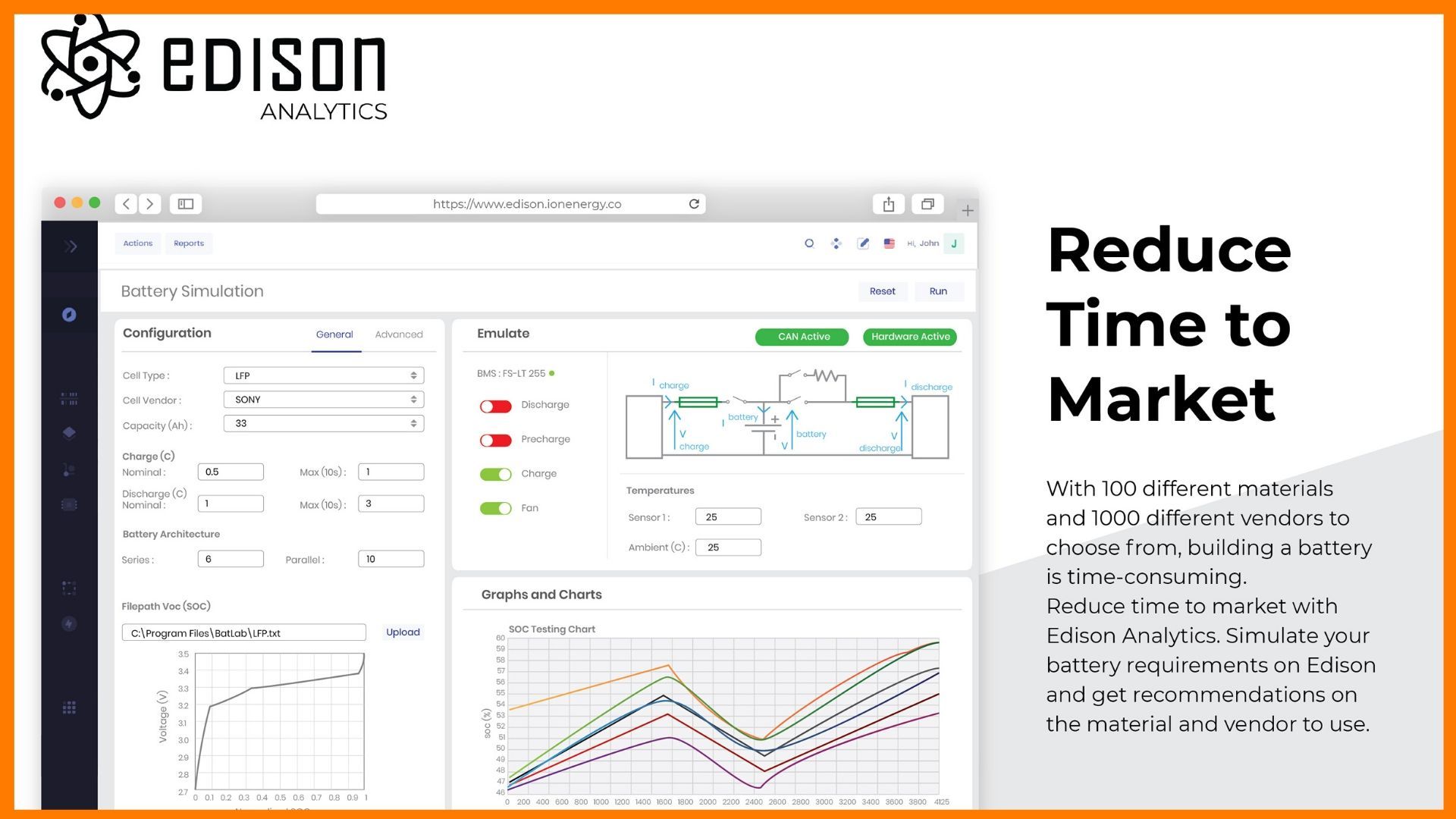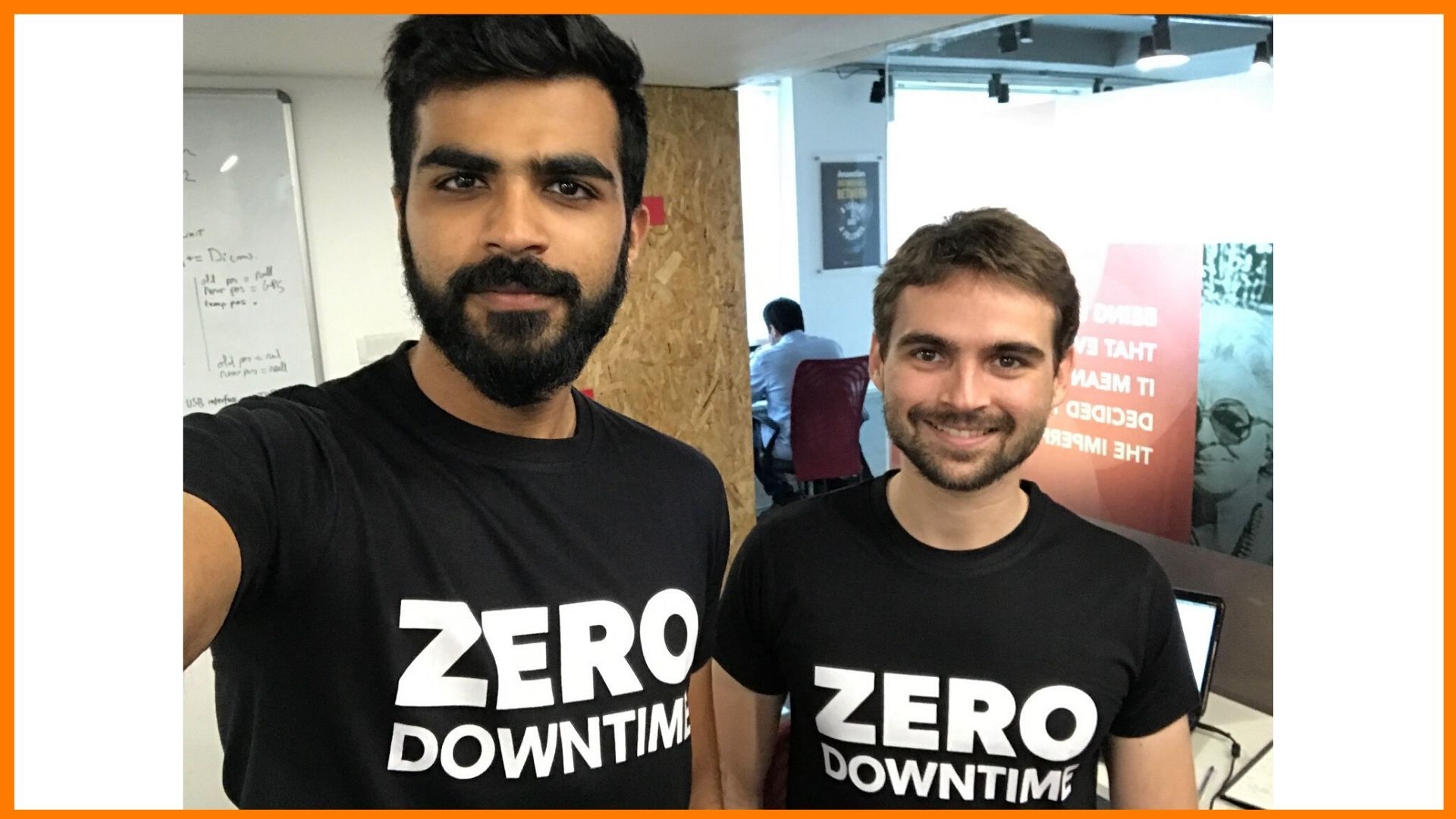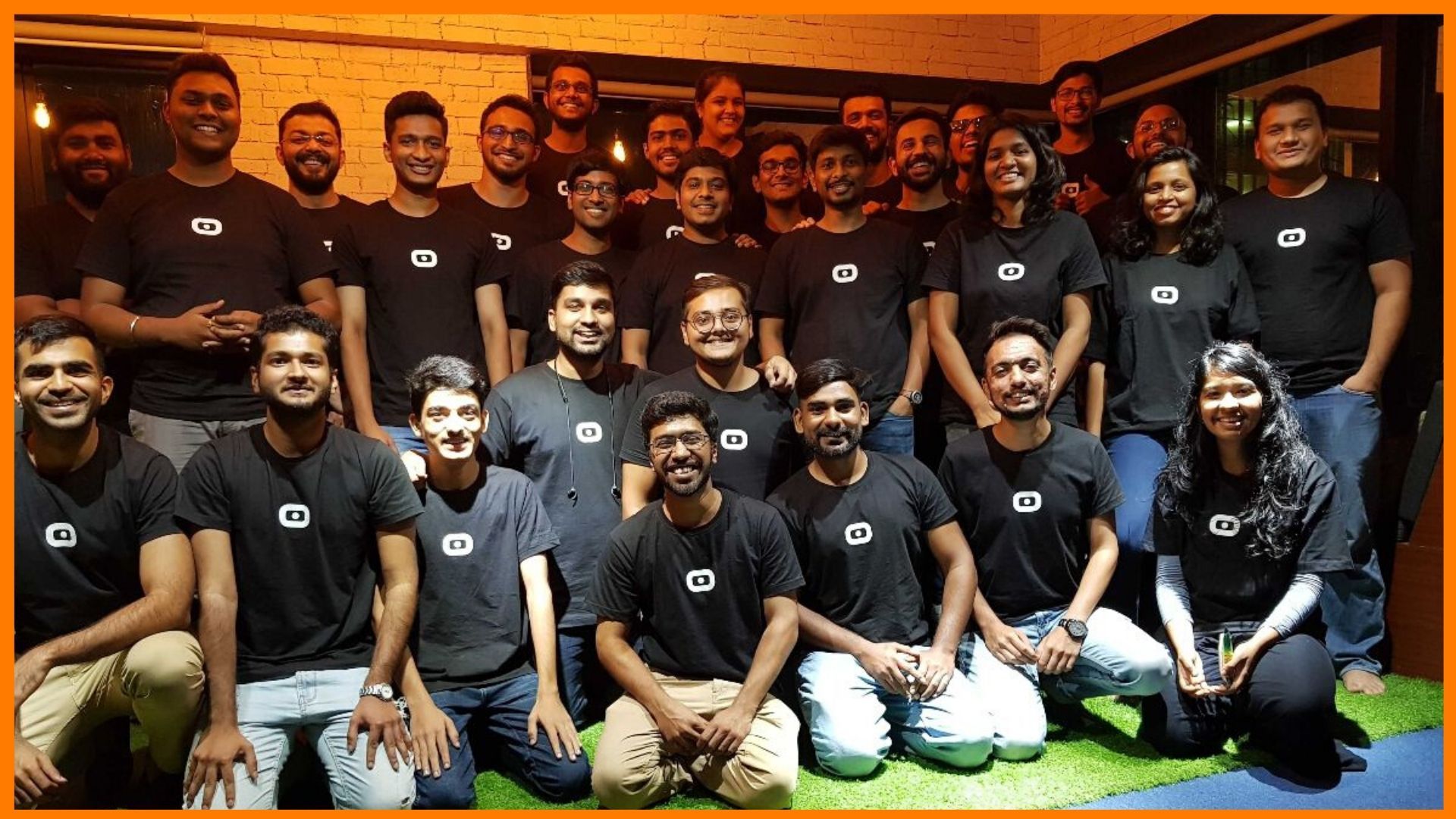With an unmatched focus on India’s diverse geographic needs, MapmyIndia has developed a comprehensive mapping platform that goes beyond traditional road navigation. From automotive solutions to smart city applications, their products and services cater to industries like fleet management, real-time traffic monitoring, e-commerce, and government sectors.
MapmyIndia’s dedication to accuracy, local relevance, and amazing technology has earned it a strong market position, distinguishing it from global competitors. With a firm belief in empowering users, MapmyIndia is committed to continuing its expansion across India and beyond, shaping the future of location-based services.
In this StartupTalky article, we’ll take a deeper look into MapmyIndia’s startup journey, business model, revenue model, funding, IPO, strategic investments, and vision for global and technological expansion.
MapmyIndia – Company Highlights
| Name | MapmyIndia |
|---|---|
| Headquarters | New Delhi, India |
| Sector | IT |
| Founder | Rakesh Verma and Rashmi Verma |
| Founded | 1995 |
| Website | Mapmyindia.com |
MapmyIndia – About
MapmyIndia – Industry
MapmyIndia – Founders and Team
MapmyIndia – Startup Story
MapmyIndia – Mission and Vision
MapmyIndia – Name, Tagline and Logo
MapmyIndia – Business Model
MapmyIndia – Revenue Model
MapmyIndia – Challenges Faced
MapmyIndia – Funding and Investors
MapmyIndia – Investments
MapmyIndia – Mergers and Acquisitions
MapmyIndia – Growth
MapmyIndia – Advertisements and Social Media Campaigns
MapmyIndia – Awards and Achievements
MapmyIndia – Competitors
MapmyIndia – Future Plans
MapmyIndia – About
MapmyIndia is a pioneering Indian technology company focused on creating advanced digital mapping and location-based solutions. Since its start in 1995, the company has grown significantly and now offers a suite of services including high-quality digital maps, telematics solutions, location-driven SaaS products, and cutting-edge GIS and AI technology. With its main office in New Delhi, MapmyIndia also operates regional hubs in Mumbai and Bengaluru, along with a network of smaller offices throughout India. On the international front, MapmyIndia has established a presence in the San Francisco Bay Area and Tokyo, furthering its global reach and influence in the digital mapping space.
MapmyIndia – Industry
The Indian geographic information system (GIS) market is on a strong upward trajectory, with a valuation of $547.3 million in 2023 and an anticipated compound annual growth rate (CAGR) of 13.5% through 2032. This growth is largely driven by the increased adoption of advanced GIS solutions across sectors such as agriculture, military, real estate, and transportation, each benefiting from the enhanced data insights and precision that GIS technology provides.
In terms of market composition, GIS in India spans three key segments: hardware, software, and services. At present, software dominates the market share, reflecting the high demand for GIS applications that help organizations visualize, analyze, and interpret spatial data.
Advancements in artificial intelligence (AI), cloud computing and the Internet of Things (IoT) are further boosting the appeal and versatility of GIS technology. These innovations are making GIS more powerful and accessible, offering businesses more ways to integrate spatial data into their operations. As these technologies continue to evolve, GIS solutions are expected to become increasingly critical for data-driven decision-making across both public and private sectors in India.
MapmyIndia – Founders and Team
Rakesh Verma

Rakesh Verma, Co-founder, Chairman, and Managing Director of MapmyIndia, has played a pivotal role in shaping the digital mapping landscape in India. Alongside his wife, Rashmi Verma, he co-founded CE Info Systems in 1995, inspired by the possibilities of Geographic Information Systems (GIS) to revolutionize data access and mapping in India.
With a background in mechanical engineering from the Birla Institute of Technology and Science (BITS), Pilani, and an MBA from Eastern Washington University, Verma initially built a successful career with General Motors in the U.S. before deciding to return to India. In 1993, his introduction to GIS sparked a vision for India’s digital mapping potential—a vision he was determined to realize. Under his leadership, MapmyIndia undertook the ambitious project of creating India’s first comprehensive digital map, laying the groundwork for the company’s future as a leader in digital maps, location-based solutions, and GIS technology.
Verma’s expertise and contributions earned him an appointment to the Government of India’s Committee on Geographical Information Systems (GIS), further solidifying his influence in the field. His journey highlights a commitment to innovation and to advancing India’s technological landscape.
Rashmi Verma

Rashmi Verma, co-founder & CTO of MapmyIndia, has had an extraordinary career shaped by a deep commitment to technology and a desire to make a difference. An alumna of IIT Roorkee, where she earned her Bachelor’s in Engineering with Distinction in 1977, she went on to pursue an MS from Eastern Washington University in 1979. Her early career was marked by rapid growth at IBM in the U.S., where she rose from Software Engineer to consultant for IBM Global Business Services.
Despite her success in the U.S., Rashmi chose to leave a well-established career to follow her vision of bringing advanced IT solutions to India. Alongside her husband, Rakesh Verma, she co-founded CE Info Systems in the early 1990s, driven by her extensive technical experience and a passion for innovation. Her background with IBM gave her a strong foundation in the latest software technologies, which proved invaluable as she embarked on her entrepreneurial journey.
Beyond her work in technology, Rashmi is a frequent speaker at women’s business leadership events, where she encourages other women to pursue their entrepreneurial dreams. She and her husband live in New Delhi and they have two children, both accomplished in their respective fields. Rashmi Verma’s journey is an inspiring example of how determination and vision can bring about transformative change.

Rohan Verma

Rohan Verma is the CEO and Executive Director of MapmyIndia. While still studying at Stanford University, he played a key role in the creation of MapmyIndia. Rohan holds a Bachelor of Science (BS) in Electrical Engineering from Stanford University and an MBA from London Business School (2013-2015).
In addition to his work at MapmyIndia, Rohan has served as an advisor and investor for Visit Health and as a board member at Cholamandalam Investment and Finance Company Limited.
In December 2024, Rohan Verma announced his decision to step down as CEO of MapmyIndia to start a new B2C venture. He will continue as a Non-Executive Director on MapmyIndia’s board starting in April 2025.
MapmyIndia – Startup Story
Rakesh and Rashmi Verma co-founded MapmyIndia in 1995, with a vision to create India’s first digital mapping and GPS navigation service. Driven by the stark realization that India’s map data hadn’t been updated since the colonial era, the Vermas identified a critical need for comprehensive, accurate mapping solutions in the country. Although they initially approached the government for geographical data, they encountered bureaucratic roadblocks. This challenge prompted them to build a mapping database themselves—pioneering the use of both digital tracing and physical surveys.
The couple began their venture from a small three-bedroom apartment in New Delhi. They used a unique approach that combined top-down and bottom-up strategies. They digitally traced all available paper maps while conducting extensive field surveys to capture granular details that no digital maps in India yet had. This Herculean effort involved over 400 surveyors who trekked through cities and villages, manually gathering data to create a precise digital map of India.
Their journey officially took off with Coca-Cola as MapmyIndia’s first enterprise client, helping the beverage giant define precise distribution territories, an invaluable service at a time when accurate local maps were scarce. Soon, other major companies like Marico, Hindustan Unilever, and the Indian Defense Services followed suit. By the early 2000s, MapmyIndia’s enterprise client base expanded to 500, providing vital mapping services for logistics, telecommunications, and defense.
Over 25 years, MapmyIndia’s database has evolved to cover over 10.54 million unique destinations, 2 million kilometers of road, and 7068 cities with street-level data. The platform also includes house-level data for 80 cities, comprehensive mapping of 600,000 villages, and 3D landmarks in 86 cities. Today, MapmyIndia stands as India’s leading provider of location technology, offering an extensive API stack, IoT devices, mobile applications, and navigation tools that challenge global players like Google. The Vermas’ vision has transformed MapmyIndia into a critical asset for businesses, government agencies, and individual users, marking it as a pioneer in India’s digital transformation in geospatial technology.
MapmyIndia – Mission and Vision
MapmyIndia’s mission and vision reflect a commitment to making the world a better place through advanced location technology, IoT, and mapping solutions. With a strong focus on India, MapmyIndia delivers localized products and services that consider the unique cultural and geographical diversity of the country. Their deep understanding of India’s people, languages, and regional nuances enables them to develop tools that are both highly effective and culturally resonant.
A core part of their mission is to empower users by providing accessible, intuitive solutions that help them navigate and address daily challenges—whether in logistics, personal navigation, or enterprise needs. MapmyIndia’s dedication to continuous innovation underscores its commitment to solving evolving problems, staying ahead in the geospatial and mapping industry, and enhancing its technology to offer best-in-class solutions.
Through these efforts, MapmyIndia aims not only to lead in India but also to set a global standard for impactful, user-focused technology that leverages maps and location intelligence to improve everyday life.
MapmyIndia – Name, Tagline and Logo

MapmyIndia’s logo, with its dynamic font and vibrant hues, represents innovation and progress in geospatial technology. The design symbolizes a modern and comprehensive approach to mapping, to convey the company’s mission to connect people, businesses, and governments through precise and user-centric mapping solutions.
Tagline: “Not just roads, we take you to doors.”
This tagline perfectly describes MapmyIndia’s commitment to providing precise, hyperlocal mapping and navigation solutions. It emphasizes its focus on detailed, last-mile connectivity, ensuring seamless navigation not only through roads but also to exact doorsteps, reflecting the company’s drive for accuracy and usability.
MapmyIndia – Business Model
With a broad portfolio of services, MapmyIndia serves a wide array of clients across industries, from private companies in logistics and banking to public-sector organizations in transportation and emergency response. Their multi-layered service structure—MAAS, SAAS, PAAS, and DAAS—demonstrates MapmyIndia’s versatility and strategic alignment with diverse market needs, establishing them as a comprehensive provider in the location intelligence and geospatial technology space.
1. MAAS – Maps-as-a-Service
MapmyIndia provides comprehensive mapping solutions to support businesses across multiple sectors. By offering their extensive digital maps as a service, MapmyIndia powers navigation and location-based services for automotive, fleet management, and mining companies. These maps are frequently used in school bus tracking, eCommerce deliveries, and paint companies to optimize operations with accurate and updated geographic data.
2. SAAS – Software-as-a-Service
The company’s SAAS solutions focus on specialized software applications built around geospatial data. These solutions serve sectors like video telematics for real-time surveillance, banking and NBFCs for location-based customer services, and government organizations for applications like GPS installations, real-time traffic monitoring, and emergency response systems. Additionally, EV charging stations leverage MapmyIndia’s SAAS to help users locate nearby charging points, facilitating the growing electric vehicle ecosystem.
3. PAAS – Platform-as-a-Service
As a PAAS provider, MapmyIndia offers robust geospatial platforms that support diverse applications. Ecommerce platforms and state transport organizations benefit from these platforms for optimizing logistics and managing real-time traffic updates. They also extend services to property tax assessment, providing accurate location data and helping municipal corporations assess and track property values.
4. DAAS – Drone-as-a-Service
MapmyIndia’s drone services (DAAS) are tailored for industries such as mining for land surveying and state police for emergency and real-time surveillance. Drones provide valuable data to support property tax assessments, helping governments and local bodies achieve accurate property mapping.
5. Consumer Gadgets and Devices
MapmyIndia caters to end consumers by offering GPS-enabled gadgets and devices that provide navigation solutions tailored for personal use.

MapmyIndia – Revenue Model
MapmyIndia has expanded its range of services, offering a comprehensive API stack that powers geo-locational functionality in various applications. This API suite supports app developers across sectors—examples include OLX, Flipkart, and accessibility apps for the visually impaired. The stack enables advanced navigation, tracking, telematics, and location-based analytics, with use cases extending to smart parking systems and personalized maps.
To enhance accessibility, MapmyIndia adopted a freemium model for its API stack. Rohan Verma, the CEO of MapmyIndia explained that going freemium was a strategic choice to broaden reach and adoption. With this model, MapmyIndia has observed significant growth in developers using its APIs, contributing to a notable increase in user base and customer engagement. Currently, the company boasts over 5,000 enterprise customers, holds an impressive 80% market share in the location intelligence sector, and supports more than 2,000 SaaS customers who utilize its platforms for fleet management and location analytics.
MapmyIndia has also diversified into several specialized initiatives:
- CBDT Collaboration: The company assists the Central Board of Direct Taxes (CBDT) by mapping transactions to better assess taxable income based on locational data. By linking geographic information to PAN card data, the initiative aims to expand India’s taxpayer base.
- SBI Finder App: This app aids users in locating SBI ATMs, PoS, branches, and fuel stations with cash points, showing MapmyIndia’s reach in fintech applications.
- Safety and Tracking Solutions: The company has developed devices like Safemate, a compact IoT-enabled safety tracker ideal for personal security, especially for women and children. DriveMate, another key offering, is a plug-and-play GPS tracker for vehicles, compatible with most car models. DriveMate provides real-time data on vehicle status, such as speed, location, battery health, and engine activity.
- Smart City & Swachh Bharat Initiatives: In Ambala, MapmyIndia implemented a GPS-guided biometric system to track municipal staff and sanitation workers, contributing to urban management under the Swachh Bharat mission.
- Acquisition of VIDTEQ: MapmyIndia acquired VIDTEQ, a Bengaluru-based video mapping innovator, adding video-based route visualization. This acquisition enables users to view route previews within city areas, enhancing route-planning options and user experience.
Through these ventures, MapmyIndia remains at the forefront of India’s digital mapping and geolocation ecosystem, establishing itself as a critical player in government, safety, urban planning, and consumer applications, while continuously innovating to drive greater value in location-based technologies.
MapmyIndia – IPO
The successful IPO launch of MapmyIndia marked a significant step in its growth journey, providing the company with the capital to expand its innovative mapping and geospatial services.
MapmyIndia IPO is a book-built issue of INR 1,039.61 crores. The issue is entirely an offer for the sale of 1.01 crore shares.
MapmyIndia IPO bidding started on December 9, 2021, and ended on December 13, 2021. The allotment for MapmyIndia IPO was finalized on December 16, 2021. The shares were listed on BSE, and NSE on December 21, 2021.
MapmyIndia IPO price band was set at INR 1000 to INR 1033 per share. The minimum lot size for an application was 14 shares. The minimum amount of investment required by retail investors was INR 14,462.
MapmyIndia – Challenges Faced
Competitive Landscape
MapmyIndia operates in a competitive landscape, contending with established players like Google Maps and Apple Maps, as well as emerging competitors in the IoT-powered GPS device sector. Automakers are increasingly looking to develop proprietary mapping solutions, adding another dimension to MapmyIndia’s competition.
Despite its achievements, MapmyIndia has encountered skepticism from those who argue that India lacks a “map-reading culture.” Such views suggest that while GPS and digital maps are widely accepted, traditional map reading isn’t deeply ingrained in Indian users. Nevertheless, MapmyIndia has persisted in developing and localizing its offerings to cater specifically to India’s unique market dynamics, proving that mapping services can indeed thrive with the right approach and adaptation.
Proprietor Value
MapmyIndia has also faced legal challenges, including a high-profile dispute with Ola Electric over alleged breaches of licensing terms. The issue arose when MapmyIndia accused Ola Electric of duplicating its APIs and SDKs to create Ola Maps, which MapmyIndia claims violates their license agreement. Such disputes highlight the proprietary value of MapmyIndia’s mapping technology and the company’s commitment to safeguarding its intellectual property.
Building precise, reliable maps is a complex endeavor that requires significant time, investment, and expertise. MapmyIndia’s top-down and bottom-up approach, which combines digital tracing and extensive field surveys, underscores the resources and commitment necessary to maintain accurate and updated maps for a country as vast and diverse as India. Through this rigorous process, MapmyIndia has cultivated a rich repository of geographical data, enabling it to compete effectively while carving out a unique identity in the industry.
Providing accurate and efficient last-mile logistics solutions
Last-mile delivery demands customized, hyperlocal maps that account for variables like vehicle type, driver behavior, and real-time road conditions—factors critical for quick commerce and timely deliveries. Unlike standard consumer navigation apps, which lack this level of specificity, MapmyIndia must create maps that integrate machine-learning-based affinity navigation to guide drivers effectively, factoring in faster routes, traffic patterns, and even road safety concerns. The nuanced doorstep address system, potholes, and other localized issues also require constant adaptation to ensure optimized and safe delivery routes.
MapmyIndia – Funding and Investors
MapmyIndia has raised a total funding of $44.4M over 5 rounds.
| Date of funding | Funding Amount | Round Name | Investors |
|---|---|---|---|
| Nov 02, 2015 | $1.49M | Series C | Flipkart |
| Jul 21, 2011 | $30M | Series C | Zenrin |
| Dec 22, 2008 | $9M | Series B | Qualcomm Ventures, Sherpalo Ventures, Nexus Venture, Kleiner Perkins |
| July 26, 2007 | $2.6M | Series A | Sherpalo Ventures, Nexus Venture, Kleiner Perkins |
| Jun 01, 2006 | $1.3M | Unattributed | Kleiner Perkins,Sherpalo Ventures |
MapmyIndia – Investments
MapmyIndia has made investments in the following companies:
| Announced Date | Name | Funding Round | Money Raised |
|---|---|---|---|
| Feb 09, 2023 | Indrones | Seed Round | $849K |
| Sep 06, 2023 | KOGO | Corporate Round | $2.83M |
| Aug 8, 2022 | Nawgati | Corporate Round | $427M |
| Feb 7, 2022 | Chargeup | Seed Round | $9.56M |
| Aug 04, 2022 | Cusmat | Seed Round | $4.22M |
| Jan 07, 2022 | PupilMesh | Seed | $67K |
| Jan 15, 2021 | RoaDo | Seed | $329M |
| Sep 28, 2021 | Inventa | Seed | $835K |
| Jul 09, 2018 | Glasswing | Seed | $2.35M |
| Apr 10, 2018 | Zuppa | Seed | $1.6M |
| May 27, 2016 | Visit | Seed Round | $7.79M |
MapmyIndia – Mergers and Acquisitions
MapmyIndia has acquired the below two companies:
| Acquiree Name | Date | Price | Transaction Name |
|---|---|---|---|
| Gtropy | March 04, 2022 | — | Provider of GPS-based fleet management solutions |
| VIDTEQ India | Apr 17, 2017 | $360K | VIDTEQ India acquired by MapmyIndia |
MapmyIndia – Growth
Quarterly Decline Amid Strategic Realignment
In Q1 FY25, MapmyIndia experienced a 6% decline in its consolidated profit after tax (PAT), down to INR 35.9 Cr from INR 38.2 Cr in the prior quarter, driven by the ramp-down of older automotive original equipment (OE) customer programs and adjustments in its IoT-focused business. Operating revenue also saw a 5.1% decline, reaching INR 101.5 Cr. However, year-over-year (YoY) figures showed a positive trajectory, with PAT rising by 12.1% and operating revenue by 13.5%, indicating long-term growth.
| MapmyIndia Financials | FY23 | FY24 |
|---|---|---|
| Total Operating Revenue | INR 253.85 crore | INR 315.61 crore |
| Total Expenses | INR 146.08 crore | INR 178.89 crore |
| Profit/Loss | INR 143.15 crore | INR 177.11 crore |

In FY23, MapmyIndia earned INR 253.85 crore in revenue and spent INR 146.08 crore, making a profit of INR 143.15 crore. In FY24, its revenue grew to INR 315.61 crore, while expenses increased to INR 178.89 crore, resulting in a profit of INR 177.11 crore.
MapmyIndia strategically shifted its IoT-led business focus towards higher-margin SaaS services over hardware sales, supporting its map-led business, which grew 17.2% and bolstered EBITDA margins to 50.1%. The IoT-led segment, focusing on SaaS, surged by 89.6% in revenue. Chairman Rakesh Verma noted that these efforts increased MapmyIndia’s market reach, especially in AI-driven data analytics and consulting services.
Diverse Vertical Growth and Key Partnerships
The company divides revenue across automotive & mobility tech (A&M) and consumer tech & enterprise digital transformation (C&E), with both showing notable YoY growth. A&M grew by 9.5% to INR 45 Cr, driven by partnerships with automotive brands like Mahindra and BYD, while C&E revenue rose by 16.9% to INR 56.5 Cr, supported by major projects such as the UP Police’s Dial 112 and collaborations in e-commerce and delivery efficiency solutions.
Minor Stake Losses and Continued Growth Outlook
In addition to its core performance, MapmyIndia reported a share of losses from its investments in KOGO and Indrones, with losses of INR 38 Lakh and INR 18 Lakh respectively. Despite these setbacks, CEO Rohan Verma affirmed the company’s ongoing growth across various customer segments, highlighting its readiness to capitalize on new customer acquisitions and expand use cases within its sectors, including automotive, fleets, and government services.
MapmyIndia – Advertisements and Social Media Campaigns
Challenge of Market Dominance and Consumer Outreach
MapmyIndia is actively strategizing to counter Google Maps’ stronghold in the Indian digital maps space, driven by increasing smartphone adoption and affordable data. Founded by Rakesh and Rashmi Verma in 1995, the company is leveraging national pride with campaigns like ‘Har Ghar Tiranga’ and ‘Meri Maati Mera Desh’, which highlight flag hoisting sites, memorials, and gardens across India in its Mappls app.
MapmyIndia Har Ghar Tiranga Campaign
In addition to patriotic campaigns, MapmyIndia is focusing on strengthening its user base through a revamped app and the introduction of digital addresses nationwide. The company recognizes that the Indian market has matured and now sees an increased demand for reliable, homegrown digital maps. CEO Rohan Verma acknowledges the need for a more aggressive marketing push, stating the importance of investing in campaigns to increase brand visibility and consumer reach. The challenge lies in not only enhancing the app’s features but also ensuring that MapmyIndia reaches a broader audience willing to engage with and adopt its mapping services amidst fierce competition.
MapmyIndia – Awards and Achievements
MapmyIndia has earned numerous prestigious awards and recognitions, underscoring its excellence and innovation in the digital mapping and location technology sectors.
- Auto Bild Golden Steering Wheel (2010): Best Product/Service for their MapmyIndia VX140 GPS navigator.
- Apollo-CV Truck Application Builder of the Year (2015): MapmyIndia received the Truck Application Builder of the Year award at the 6th edition.
- Inc India 500 Certificate of Excellence (2013): This award acknowledged their sustained expansion and outstanding performance in the competitive technology landscape.
- AatmaNirbhar Bharat App Innovation Challenge: Presented by the Government of India to support India’s vision of self-reliance and technological advancement.
MapmyIndia – Competitors
MapmyIndia faces competition from several existing and emerging competitors. Some of them are as follows:
- Google Maps
- OpenStreetMap
- Mapchart.net
- Waze
- Sygic
- OsmAnd
- HereWeGo
MapmyIndia – Future Plans
MapmyIndia is charting an ambitious path toward an INR 1,000 crore revenue target by FY27-28, with the IoT business poised for an impressive tenfold expansion and other sectors expected to grow three to six times. As part of its international vision, MapmyIndia is taking its innovative solutions to new markets across Southeast Asia and the Middle East & North Africa. The company is also investing in full-stack drone capabilities through Indrones Solutions, pushing forward in drone manufacturing and data analytics.
With a SaaS-driven IoT model expected to see significant growth over the next five years, MapmyIndia is doubling down on its automotive OEM partnerships, which are set to be instrumental in hitting its revenue goals. Meanwhile, increased involvement with the ONDC ecosystem, digitization of land records, and advanced GIS solutions for urban planning signal MapmyIndia’s commitment to supporting India’s digital and infrastructural evolution.
FAQs
What is MapmyIndia?
MapmyIndia is an Indian company offering digital maps, navigation, GPS tracking, and location-based services for businesses and consumers.
Who are the owners of MapmyIndia?
Rakesh Verma and Rashmi Verma founded MapmyIndia and are its owners.
Who are the main competitors of MapmyIndia?
The main competitors of MapmyIndia include Google Maps, OpenStreetMap, HereWeGo, Mapchart.net, Waze, Sygic, OsmAnd, and many more.
When was MapmyIndia founded?
MapmyIndia was founded in 1995.
Who is MapmyIndia CEO?
Rohan Verma is the CEO of MapmyIndia. However, in December 2024, he announced his decision to step down from the role to focus on a new B2C venture. He will take on the role of Non-Executive Director on MapmyIndia’s board starting in April 2025.


















































